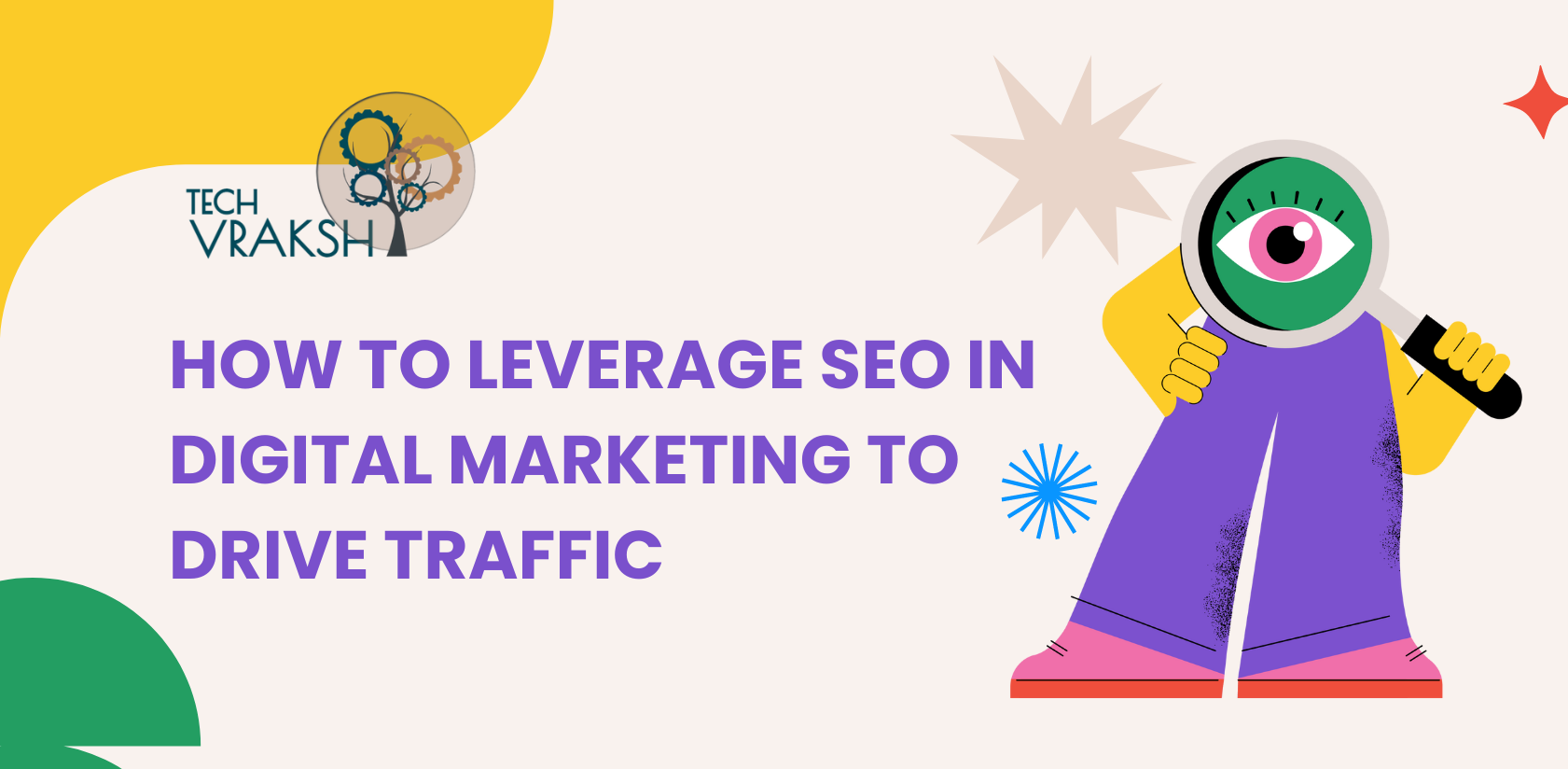Search Engine Optimization (SEO) is a fundamental pillar of digital marketing, and mastering it can be the key to driving traffic, increasing brand visibility, and ultimately boosting your business’s bottom line. SEO is not just about getting to the top of Google’s search results—it’s about creating a sustainable strategy that attracts, engages, and converts your target audience.
In this blog, we’ll explore how to effectively leverage SEO in your digital marketing efforts to drive organic traffic and create a robust online presence.
1. Understanding the Basics of SEO
SEO involves optimizing your website and content to rank higher in search engine results pages (SERPs) for relevant keywords. The primary goal is to increase organic (non-paid) traffic from search engines like Google, Bing, and Yahoo. SEO can be divided into three main components:
- On-Page SEO: Involves optimizing individual web pages to rank higher and earn more relevant traffic. This includes keyword optimization, meta tags, content quality, internal linking, and image alt texts.
- Off-Page SEO: Focuses on activities outside your website that affect your ranking, such as backlinks, social signals, and guest blogging.
- Technical SEO: Ensures your website meets the technical requirements of search engines, including site speed, mobile-friendliness, indexing, and crawlability.
2. Key SEO Strategies to Drive Traffic
Implementing a well-rounded SEO strategy is essential to driving consistent, quality traffic to your website. Here are some key strategies to focus on:
1. Conduct Thorough Keyword Research
Keyword research is the foundation of any successful SEO strategy. It involves identifying the search terms your audience uses to find products, services, or information relevant to your business.
- Use Keyword Research Tools: Tools like Google Keyword Planner, Ahrefs, SEMrush, and Moz can help you discover high-volume, low-competition keywords.
- Focus on Long-Tail Keywords: Long-tail keywords are more specific and less competitive than short-tail keywords, making them easier to rank for. For example, “best running shoes for flat feet” is more targeted than “running shoes.”
- Understand Search Intent: Determine whether users are looking for information (informational intent), ready to make a purchase (transactional intent), or seeking to compare options (navigational intent). Align your content with the user’s intent to increase relevancy.
2. Optimize Your On-Page Elements
On-page SEO involves optimizing the content and structure of your website pages. Well-optimized pages are more likely to rank higher in search engine results.
- Title Tags and Meta Descriptions: Craft compelling title tags and meta descriptions that include your target keywords. These elements directly impact click-through rates from SERPs.
- Header Tags (H1, H2, H3): Use header tags to structure your content and make it easy for readers (and search engines) to understand. Include keywords naturally within your headings.
- URL Structure: Use clean, descriptive URLs that reflect the content of the page. Avoid long, complicated URLs with unnecessary characters.
- Internal Linking: Link to other relevant pages within your site to help users navigate and distribute page authority throughout your site.
3. Create High-Quality, Engaging Content
Content is king in the world of SEO. Creating valuable, engaging content that addresses the needs of your audience is critical to attracting traffic and keeping visitors on your site.
- Content Relevance: Your content should be relevant, informative, and address the specific pain points or questions of your audience.
- Update Regularly: Keep your content fresh by regularly updating existing posts and adding new articles. This signals to search engines that your website is active and up-to-date.
- Multimedia Integration: Use images, videos, infographics, and other media types to enhance your content and make it more engaging. These elements also provide opportunities for additional keyword optimization.
4. Improve Website Speed and Mobile Friendliness
Page speed and mobile responsiveness are crucial factors in SEO. Google prioritizes websites that load quickly and provide a good user experience on all devices.
- Optimize Images: Compress images and use modern formats like WebP to reduce load times without sacrificing quality.
- Leverage Browser Caching: Enable caching to store some of your website’s static resources on users’ devices, speeding up repeat visits.
- Mobile-First Design: Ensure your site is fully responsive, with content that adapts seamlessly to different screen sizes. Google uses mobile-first indexing, so the mobile version of your site is what’s considered for ranking.
5. Build High-Quality Backlinks
Backlinks, or inbound links from other websites, signal to search engines that your content is credible and authoritative. High-quality backlinks can significantly boost your SEO rankings.
- Guest Blogging: Contribute articles to reputable websites within your industry. Include a link back to your site to drive traffic and build authority.
- Content Outreach: Share your content with influencers, bloggers, and industry websites that might find it valuable. Encourage them to link to your content if it provides value to their audience.
- Create Link-Worthy Content: Publish original research, infographics, and in-depth guides that others in your industry will want to reference and link to.
6. Utilize Local SEO Techniques
If your business has a physical location or serves specific regions, local SEO is crucial for driving targeted traffic. Local SEO focuses on optimizing your online presence to attract local customers.
- Optimize Google My Business: Claim and optimize your Google My Business profile with accurate business information, including address, phone number, hours of operation, and photos.
- Local Keywords: Include location-specific keywords in your content, meta tags, and headings. For example, “best Italian restaurant in New York City.”
- Encourage Customer Reviews: Positive reviews on platforms like Google and Yelp can enhance your local SEO ranking and build trust with potential customers.
7. Leverage Analytics and Continuous Improvement
SEO is not a one-time effort; it requires continuous monitoring and optimization. Use analytics tools to track performance and identify areas for improvement.
- Google Analytics: Track traffic sources, user behavior, and conversion rates to understand how visitors interact with your site.
- Search Console: Google Search Console provides insights into how your site appears in search results, including keyword rankings, click-through rates, and any technical issues that need fixing.
- A/B Testing: Experiment with different SEO strategies, headlines, and content layouts to see what resonates most with your audience.
3. Measuring the Success of Your SEO Efforts
To gauge the effectiveness of your SEO strategy, track key performance indicators (KPIs) that align with your goals:
- Organic Traffic Growth: Monitor the increase in organic visitors over time.
- Keyword Rankings: Track how your target keywords are performing in search results.
- Bounce Rate: A high bounce rate may indicate that visitors aren’t finding what they’re looking for, suggesting a need for content optimization.
- Conversion Rates: Measure how well your SEO efforts are contributing to your overall business objectives, such as lead generation or sales.
4. Conclusion: SEO as a Driving Force in Digital Marketing
SEO is a powerful tool that, when leveraged effectively, can transform your digital marketing efforts by driving targeted traffic to your website. From optimizing on-page elements and building quality backlinks to improving site speed and focusing on local SEO, these strategies collectively boost your online visibility and credibility.
At TechVraksh, we specialize in creating comprehensive SEO strategies tailored to your business needs. By integrating the latest SEO practices, we help you reach your target audience, enhance your digital presence, and achieve your marketing goals.
Ready to unlock the full potential of SEO for your business? Let’s start optimizing today!

